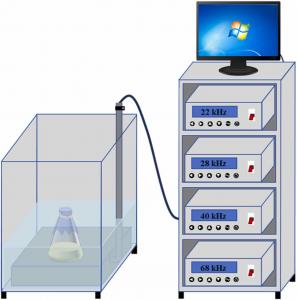Effect of ultrasound-assisted fermentation on physicochemical properties and volatile flavor compounds of rice wine
CHINA, January 5, 2024 /EINPresswire.com/ -- Ultrasound can increase the yield of ethanol, shorten fermentation time, and increase the type and content of esters. This study proposed a green physical technology (ultrasound) applied to traditional fermentation,which can provide a theoretical and /or thenchnical basis for the research and development of enzymatic RW brewing.
Traditional Chinese rice wine (RW) has been popular in China for thousands of years. The brewing process involves simultaneous saccharification and solid-state fermentation using mixed saccharifying starters, such as wheat starter and distiller's yeast. However, the brewing medium contains a diverse array of microorganisms, and the quality of starters varies across regions. This leads to an unpredictable fermentation process and inconsistent RW product quality. In addition, traditionally fermented RW has several limitations including thin taste, long brewing time, slow product conversion and limited application of high-technology. Although some progress has been made in addressing the limitations of traditional brewing, the need for further research and innovation remains.
Ultrasound, as a new non-thermal physical processing technique, has extensively been utilized to overcome the drawbacks of conventional fermentation. Some studies have showed that the application of ultrasonic technology in brewing can enhance the fermentation efficiency and quality. To date, research on ultrasound-assisted fermentation has mainly focused on the pure culture fermentation process in the laboratory.
To that end, a new study published in the KeAi journal Food Physics, established an enzymatic brewing process for RW by simulating actual production. By adding α-amylase to liquefy the starch, it is hydrolyzed from long-chain starch to short-chain dextrin and oligosaccharides to assist saccharifying enzyme in converting starch into fermentable sugar.
The researchers, based in China, analyzed the impact of ultrasound on the physicochemical properties and volatile compounds during the fermentation process. They found that concentrations of isobutyl acetate, ethyl butyrate, ethyl hexanoate and phenethyl acetate exhibited significant increases of 58.03%, 107.70%, 31.84%, and 18.71%, respectively.
The findings suggest that the utilization of ultrasound in the brewing process could be feasible for simplifying the procedure, reducing brewing time and enhancing the volatile flavor profile of RW.
DOI
10.1016/j.foodp.2023.100006
Original Source URL
https://doi.org/10.1016/j.foodp.2023.100006
Funding information
This work was supported by the Key Research & Development Program (Modern Agriculture) of Jiangsu Province (BE2021348).
Lucy Wang
BioDesign Research
email us here
Legal Disclaimer:
EIN Presswire provides this news content "as is" without warranty of any kind. We do not accept any responsibility or liability for the accuracy, content, images, videos, licenses, completeness, legality, or reliability of the information contained in this article. If you have any complaints or copyright issues related to this article, kindly contact the author above.

